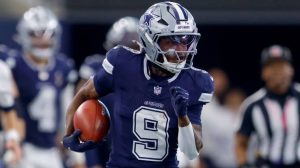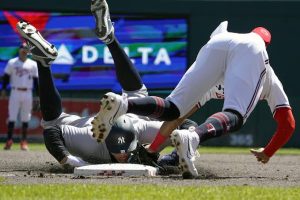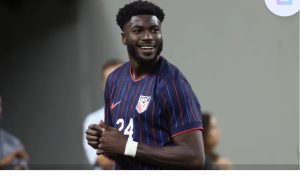
Bulls Must Be Cautious Targeting Draft Prospect Reminiscent of Patrick Williams.
The NBA Draft is always a pivotal moment for franchises looking to change their fortunes, and for the Chicago Bulls, every selection counts as they attempt to climb back into contention. As the 2025 draft approaches, speculation is swirling around a prospect drawing comparisons to Patrick Williams, the Bulls’ 2020 fourth overall pick. While the similarities are intriguing, the Bulls would be wise to approach such a prospect with measured caution rather than excitement.
Patrick Williams arrived in Chicago with immense potential. Drafted out of Florida State despite coming off the bench in college, Williams was billed as a versatile two-way forward with elite defensive tools and offensive upside. He checked every box for a modern NBA wing—size, length, athleticism, and a quiet maturity beyond his years. But after four seasons, Williams remains a player defined more by what he could become than what he has delivered.
Injuries, inconsistency, and an occasionally passive approach have hampered his development. While flashes of brilliance—smooth jumpers, strong defensive stands, and stretches of assertiveness—suggest he still has a high ceiling, Bulls fans and executives alike are still waiting for Williams to take that decisive leap. And that’s precisely why drafting a player who mirrors his profile might be a risk rather than a revelation.
This year’s draft class includes a handful of prospects who, like Williams, are raw, toolsy forwards with the kind of physical gifts that get scouts drooling. Long arms, switchable defense, and flashes of offensive creation make them tantalizing, but also incredibly difficult to project. The comparison to Williams isn’t an indictment—he remains a valuable rotation player and could still break out—but it is a cautionary tale.
The NBA is littered with players who looked the part but never quite figured it out. For every Kawaii Leonard, there are several tantalizing wings who never refined their game. Drafting based on potential is a gamble, and the Bulls, currently stuck in a middling position in the Eastern Conference, can’t afford to whiff again. They need impact—not just promise.
One of the biggest concerns with targeting another “Patrick Williams-type” is developmental trajectory. Williams came into the league needing reps, coaching, and a clear role to grow into. The Bulls, however, have been anything but stable during his tenure. Coaching changes, roster upheaval, and shifting expectations haven’t provided the nurturing environment a project player often requires.
That problem persists today. Chicago’s front office is in transition, and the team’s direction remains murky. Are they rebuilding? Reloading? Trying to compete while retooling? Drafting a raw forward without a concrete plan would be doubling down on ambiguity—a dangerous strategy in today’s league.
Moreover, Chicago has already invested in a similar mold. Aside from Williams, the roster includes young forwards like Julian Phillips and Dalen Terry, both athletic wings still trying to establish themselves. Adding another player to that logjam without addressing core needs—like point guard depth, shooting, or rim protection—would be more of the same.
That said, it’s not that the Bulls should avoid prospects who share certain traits with Williams. Defensive versatility, positional size, and upside are all valuable. But the context matters. The Bulls must assess not only what the prospect could be, but also how likely he is to reach that ceiling—and whether Chicago is the right environment for that development.
Take note of the front offices that excel at turning raw wings into stars. Toronto, Miami, Oklahoma City—these teams have established cultures and development pipelines that mold talent over time. The Bulls, meanwhile, have struggled to define who they are. Without clarity in vision and structure, even the most talented player may flounder.
So if the Bulls find themselves enamored with a prospect who reminds them of Patrick Williams, they must ask the tough questions: Is this player’s motor consistent? Can he contribute early in specific areas? Does he show flashes of feel for the game—decision-making, anticipation, timing—that often separates stars from athletes?
There’s nothing wrong with betting on upside, but it should be a calculated bet—not a leap of faith based on hope and resemblance. Chicago’s roster already has enough question marks. What it needs now are answers: contributors who can grow within a clear system, not mysteries that deepen the fog.
Patrick Williams still has time to prove he was worth the gamble. But until he does, the Bulls should tread carefully before going back to the well. Similarity in style doesn’t always equate to similarity in outcome, and the Bulls can’t afford to repeat history while trying to rewrite it.






